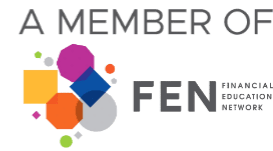It’s the single most critical factor in wealth accumulation, retirement success and financial independence. So it’s frightening that women continue to consistently lag men on financial and investor literacy scores in all generations—among boomers, Gen Xers and millennials.
This is the upshot of a six-year study by the Finra Investor Education Foundation, “Gender, Generation and Financial Knowledge: A Six-Year Perspective,” which found that the gender gap in financial and investment literacy has persisted, though the gap has decreased for millennials.
In 2015, boomer women lagged men in terms of financial literacy by 19 percent and for Gen Xer women by 18 percent, but for millennials, the gap narrowed to 10 percent.
Also promising: Women are becoming more confident in their financial literacy: 53 percent of millennial women reported that they are the most financially knowledgeable person in their households.
“It is encouraging that the gap in financial literacy and self-assessed financial knowledge appears to be narrowing for millennials—a trend that bodes well for women in the future,” said Finra Foundation President Gerri Walsh. “While a number of factors might influence these changes, access to financial education could be making a difference as men and women with higher financial literacy scores reported participating in financial education in high school, college or the workplace.”
Still, the gap in literacy persists. For instance, boomer men reported a 60% higher investor literacy than millennial women, based on results from a 10-question survey. Investor literacy—having the knowledge to make informed financial decisions—has been linked to wealth accumulation, stock market participation and retirement planning.
“Lower levels of financial and investor literacy among women may impede their ability to accumulate wealth and make sound financial decisions,” Walsh said. “These findings have the power to help researchers and policy makers better understand how and why men and women make financial decisions.”
What could narrow the gender gap in financial literacy? There are a number of factors, but access to financial education appears to lead the pack. While older generations reported less exposure to financial education, the study shows that across every generation, men were more likely than women to report having been offered financial education in school or the workplace. Millennials accounted for the highest exposure to financial education, with 45 percent of millennial men and 33 percent of millennial women saying they were offered such education. The disparity in access to financial education continues to be significant, Finra found.


